How It Started — Friday, March 21, 2003
Brian:Hi Mike, how are you?
Michael:Pretty good, thanks. What’s up?
Brian:Have you gotten your Kodak DCS 14N review sample yet?
Michael:No. Kodak has been promising one for a while, but nothing yet.
Brian:Well, we just got our dealer sample in this morning. Would you like to see it?
What would your answer have been?
A:Naw. I’m busy.
B:I’m watching the Iraqi war on TV. Maybe another time.
C:I’ll be over in 20 minutes.
I don’t need to tell you what my answer was.
The call had been from my friend Brian, a digital equipment salesman atVistekin Toronto — Canada’s largest professional photographic equipment dealer. I buy most of my gear from Vistek. I have no special relationship with them though — they’re just a first rate dealer who I’ve been pleased to do business with over many years.
Due to my great persuasive skills (blush) I was able to borrow the camera for several hours of testing. Murphy being at work, as always, Friday was a dreary, rainy and cold early spring day in Toronto. Not exactly conducive to doing equipment testing, let alone more creative aspects of photography. Nevertheless I used the time available to shoot as many varied frames as I could.
Naturally I was primarily interested in image quality. For this reason I spent little time concerning myself with the camera’s features beyond those needed to set the camera appropriately. I will have the camera again on Sunday, March 23, for the entire day and will spend quite a bit more time looking closely at the features and capabilities of this important new camera.
____________________________________________________
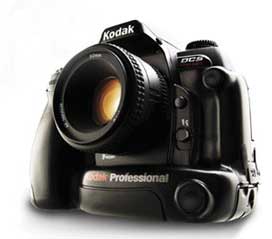
The Ground Rules
Whenever I do my equipment tests, particularly when I’m one of the first people to do a test of a production camera, I get a lot of flack from those that complain that my methodology isn’t scientific. Nope. It isn’t. I’m a photographer, educator and journalist, not a formal equipment tester or scientist. My sole interest is — what do the images that a piece of equipment produces look like? For this reason my testing is based on doing photography out in the real world, and my evaluations are done on-screen and on prints. I’ve been doing this stuff for nearly 35 years. You may not like my methodology; you may disagree with my results. But, I stand by them, and feel that they are the fair result of an objective evaluation done by a working photographer for other photographers.
____________________________________________________
The Comparison
TheKodak 14nand theCanon 1Dsboth were announced atPhotokinain September, 2002, within a day or so of each other. Let’s be honest. Looking at the 14n without a comparison to its primary competition, the 1Ds, would be like test driving the latest Mercedes without comparing it to the comparable BMW model. For this reason this initial image quality evaluation is done as a comparison with the 1Ds. Anything else would frankly be incomplete.
Ignoring theContax N Digital, which though it was the first full-frame 35mm digital camera when released in mid-2002 isn’t really currently a factor in the marketplace, the Kodak and Canon cameras are the first full frame cameras with serious market potential. The Canon 1Ds started shipping in late November, 2002 and in the past several months has established itself as the highest quality digital SLR yet to hit the market.
I was the first person in the world to publisha hands-on review of the Canon 1Ds, and subsequently have published several follow-up articles both here onThe Luminous Landscapeand also inPhoto Techniquesmagazine, where I am Contributing Editor. In the interest of full disclosure, I subsequently purchased a 1Ds for my own use and it is now my primary camera.
Having said that, I should also mention that I have spent more of my professional career shooting with Nikon gear (starting with anF Photomicin the 1960’s), than I have shooting with Canon gear, so I have some considerable experience with both systems. And, though I am identified with Canon gear these days, I have no business relationship with that company, or any other. Regular readers know that this site is non-commercial. No sponsors. No corporate relationships. No ads. No pop-ups. In other words — I intend on being as objective as possible in conducting these tests.
Enough preamble — on the with the test.
____________________________________________________
First Impressions
Picking up the 14n the first impression that you have is how light it is, especially compared to the 1Ds which is, frankly, a brick. The next impression is that the 14n’s industrial design appears to be late 20th century Soviet functional, nothing like the sleek and integrated styling and ergonomics of some contemporary Japanese and German equipment. And no, the 14n isn’t built in Russia, it’s made in Rochester N. Y., and according to Kodak is an original Kodak design, though they have dipped heavily into the Nikon parts bin for many internal and external components.
But I won’t dwell further right now on the camera’s features and functions. My initial interest is in its image quality. For anyone that’s been cruising the discussion boards for the past few months, especially theKodak SLR Talk forumonDPReview, you’ll know how much gnashing of teeth there has been about the release delays as well as the quality of sample images posted by Kodak on their web site. If the image quality isn’t there then nothing else matters much.
Both cameras were set to RAW mode, full resolution, and RAW conversion was done in 16 bit mode. This produced a 77.2 MB file from the 14n and a 63.2 MB file from the 1Ds. The 1Ds is an 11MP camera while the 14n is a 14MP camera.
For this day’s tests the cameras were equipped with comparable lenses; the 1Ds with the Canon24-70mm f/2.8Land the 14n with the Nikon28-70mm f/2.8 D AF. These are each the current state-of-the-art mid-range zooms offered by the two manufacturers, and are typical of the lenses that many pros use on a daily basis.
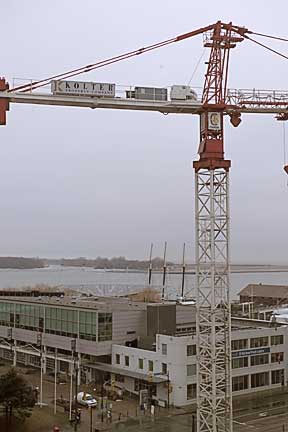
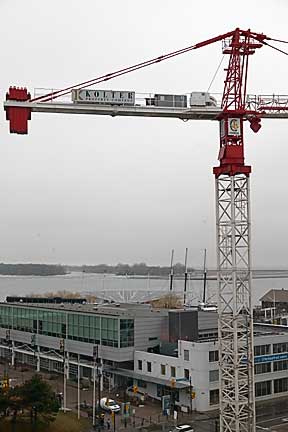
50mm focal length. f/5.6. ISO 100.
Auto White Balance
Sharpened
Canon 1Ds
50mm focal length. f/5.6. ISO 100.
Auto White Balance
Sharpened
There was no sharpening done to files from either camera in the RAW processing. I will note whether or not any USM (sharpening) has been applied to the various files shown here. There is always a debate as to whether these comparisons are best done with or without sharpening of the sample files. On the one hand showing the unsharpened files removes the subjective factor, but it also obscures the fact that USM must be applied for a digital image for it to display and print properly. To try and keep the natives happy I will sometimes use USM and sometimes not, but I will always indicate what I have done.
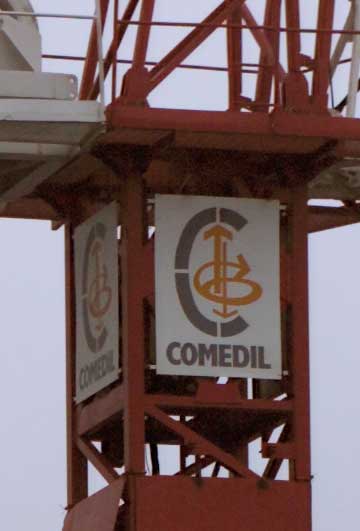
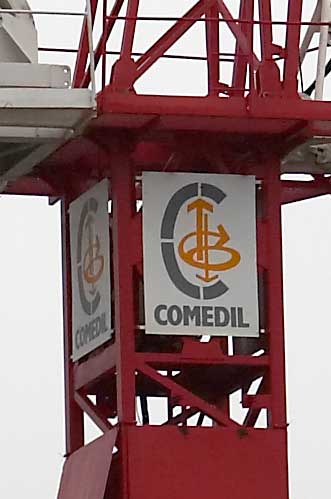
Detail — Unsharpened
Detail — Unsharpened
These two detail frames from the photographs seen immediately above are at 100% magnification. Of course they are of slightly different sizes because one camera is 14 MP while the other is 11MP. Rather than get into a twist about equalizing them (neither ressing one up or the other down seemed like a good idea) I’ve decided to simply leave them as is. Both files had basicLevelsdone to them inPhotoshopand theGray Balancewas set to the white of the sign.
What I see in this first example is probably what you see as well. The 14n’s resolution is significantly lower, as is the colour saturation and contrast. There is also some noticeable noise in the shadows of the Kodak frame.
My next test was to see what the noise might be like at ISO 400.
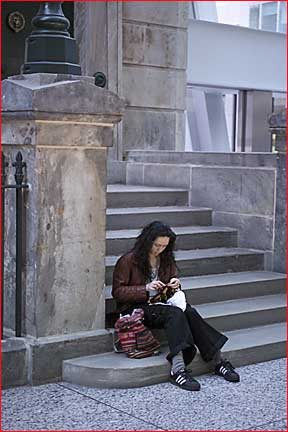
Kodak 14n. f/2.8 @ 70mm. ISO 400
Because of the rain and cold I was forced to do my tests indoors. I shoot in the Atrium ofBCE Place, a large glassed-in area lit by daylight in one of Toronto’s major office towers. The shot was taken "as metered", and as you can see a very good histogram resulted. The frame above was taken, as were all the other frames done this first day, with Auto White Balance. The frame above is straight from the camera without any change to the colour balance or levels. Sharpeningwasapplied.
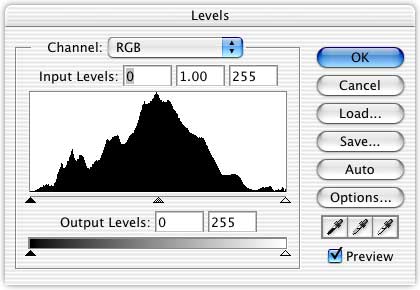

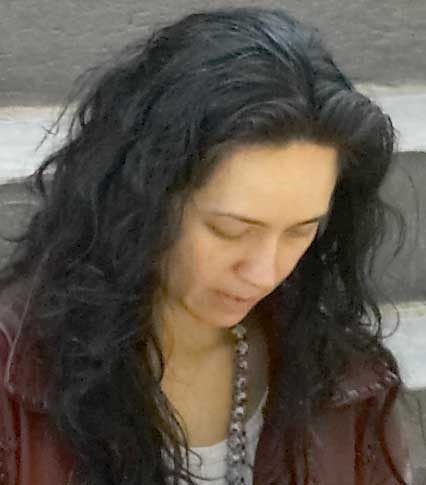
Sharpened
Sharpened
Please note that these enlargements are from the full frame above
and are equivalent to a print 42" X 63" inches in size
These 100% details of the young lady’s face is in both cases straight from the RAW conversions, without any colour balancing or Levels. But, in Kodak’sPhoto Desksoftware the default "Medium" noise reduction was applied (Radius 2, Strength 50%), and inCapture OneNoise Suppression was also at medium (half way on the scale between "low" and "high". On the 14n the "Look" was set to "Product" for all shots, as this supposedly produces somewhat greater saturation. I did apply a nominal amount of USM to the reproductions above.
Ignoring colour balance (clearly the Kodak is too pink and the Canon is too yellow)in their unadjusted state, the Kodak is very noisy in the shadows and also in the mid-tones and highlights. The Canon shows hardly any noise at all. I judge the 14n to be unacceptable in terms of noise at ISO 400, at least based on this first test example. But, you’ll see that neither frame is really all that good, suffering from a variety of defects, and so deep analysis of either camera’s image quality other than noise should not be done.
____________________________________________________
The Question of Sharpening
Since this review first appeared some 24 hours ago I have been contacted by a representative fromKodakwho has commented on the fact that theCanon 1Dsalways has some sharpening applied in the camera to compensate for the built-in antiailiasing, and thatCapture Onedoesn’t completely turn off sharpening either. On the other hand, I am told,Kodak 14nimages have no sharpening whatsoever applied unless one explicitly does so inPhoto Desk.
I understand the point, and it is fairly made. But, in some 6,000+ frames shot with the 1Ds over a 4 month period I have never made a print or a file for web use that didn’t require the application of USM. I don’t know how much might have been needed if the camera and RAW conversion software weren’t adding any to begin with, but certainly it is not hugely dissimilar from what I need to add to scanned files.
So, while a comparison of unsharpened 14n files vs unsharpened 1Ds files may therefore not be valid or fair, I have alsoalwayscompared these files when sharpened, and the sharpening has not been done using any of the automated tools, such asnik Sharpener ProorPhoto Kit, but rather using the USM tool inPhotoshop, carefully by hand and eye, with the intent of producing the best possible image.
What this means is that the ultimate image used for evaluation (and not the unsharpened and compressed JPGs seen here on the site) have had optimum sharpening; in the one case applied in stages by the camera, RAW conversion software and Photoshop, and in the other within Photoshop alone.
The proof, as they say, is in the pudding, and I believe that the pudding in this case is the final print, and the final prints that I am evaluating clearly show the differences I am reporting. I should also point out that there is a difference between resolution and accutance, and that while the application of USM has a subjective effect on resolution, it isn’t resolution per se. The careful observer can always judge resolution to some significant degree irrespective of any reasonable amount of USM that may or may not be applied.
____________________________________________________
Caveats
This is a good time to mention the caveats that I was informed about. I was told that Kodak has informed its dealers that their demos, as well as the first cameras to reach customers, will have three limitations; the highest ISO setting possible for now is ISO 400; the longest exposure is 1/2 second, and the second MD/SSD card slot is not operational. Apparently these issues, and likely others, will be addressed via future firmware downloads.
According to Kodak’s web site the 14n is "now shipping". The serial number of the camera that I have for testing this weekend is 1605, not a low number, and clearly a production camera. The camera firmware revision is 4.0.2, and I am processing images with Kodak’s latestPhoto Desk 3.0.
____________________________________________________
Summary — For Now
So far this has been a very preliminary look at this important new camera. To my knowledge it is the first independant review of a production Kodak DCS 14n to appear on line or in print, anywhere. That’s one of the reasons why I began this report with a lengthy preamble, and why I’m concluding it for this first segment with a longer than usual wrap-up.
So far all I have done is take an early look at image quality, especially noise. I have only shot at ISO 100 and 400. I have only shot with one zoom lens. I have not taken a critical look at the camera’s features and functionality nor its firmware and image processing software. I still need to do an in depth examination of construction quality and many other issues.
I also want to look at wide angle performance, particularly with regard to possible chromatic aberration and vignetting. I need to test the camera with wider and longer lenses. I will be evaluating skin tones and colour reproduction in as well.
I will address these next, and this subsequent installment will appear early next week. Futher evaluations of files from my Friday test will be added here througout the weekend.
In the meantime I am reluctant to draw any conclusions. Looking initially and strictly at a few selected aspects of image quality, and nothing else, I am concerned that what I am seeing is not up to the standards that potential purchasers should expect from a $5,000 DSLR. But, I will continue to test the camera further and will look at a great many other considerations over the next few days.
____________________________________________________
Further Evaluations
After a good nights sleep (Friday was a loong day) I have reviewed my conclusions from yesterday and also double checked all of my procedures. I’m satisfied that the process that I’ve been following, in the field and on the computer, is valid and consistent. This kind of double-check is necessary because I am publishing my impressions on an almost real-time basis. I do so with these new camera tests because of the keen interest that people have in knowing the results. If I make any mistakes I’ll be the first to correct them here.
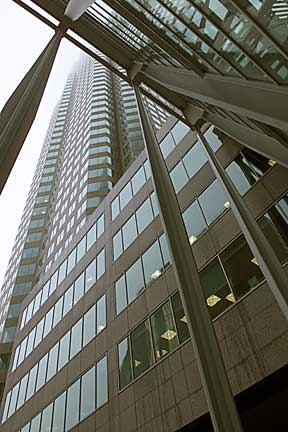
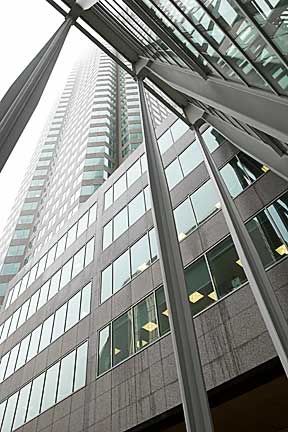
Sharpened
Sharpened
This frame was taken at ISO 100, at f/5.6 and at the wide end of the zooms, 28mm. I’ll be using it to evaluate several image quality aspects. Note that this frame is at f/5.6, two stops down from wide-open — likely close to the optimum aperture for this lens.
I have tried my best to shoot and processes these frames so that they are as close as possible to optimum. Gray balance has been set on the same spot on the building, and white point and black points carefully selected. The differences that are seen are therefore, to the best of my ability, primarily the differences between the camera systems. It should be noted that the 1Ds frame is more accurate in terms of colour rendition. The 14n frame is much too warm.
As touched on in the previous paragraph, "Systems" is the key word here. A digital camera’s image (like that from a film camera) is composed of a multitude of factors. This includes the lens used, the imaging chip’s inherent capabilities and limitations, the RAW image processing software’s effect, and user decisions. Keep this in mind when comparing these images. You are looking at a multitude of variables and try as one might they can’t all be equalized.
Lens performance is one of these factors. For this first series of tests I have chosen Nikon and Canon’s best mid-focal-length pro-level zooms. The images are therefore limited by the capabilities and characteristics of these lenses. There’s no way to swap these lenses between different manufacturer’s bodies, just as there is no way to process 14n images inCapture Oneand no way to process the 1Ds images inPhoto Desk. Such is life.
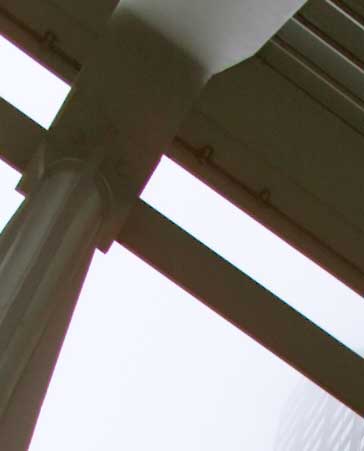
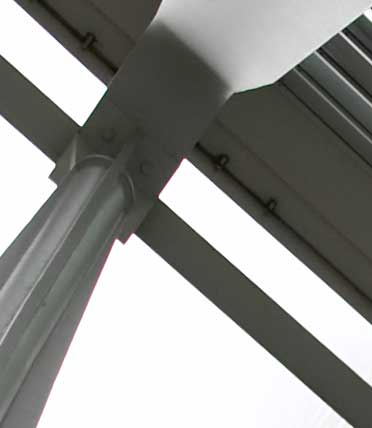
Please note that these enlargements are from the full frame above
and are equivalent to a print 42" X 63" inches in size
These frames are from the upper left hand corner of the frames. I’m using it primarily to look for chromatic aberration (CA), and I see it in both camera / lens combinations as red fringing. This is an extreme test because it is the corner of the frames, where any CA will be most visible, and also in a high contrast situation, again where it shows at its worst. In this example the 14n shows CA to greater degree than the 1Ds. This is not particularly visible in 13X19" prints from either camera.
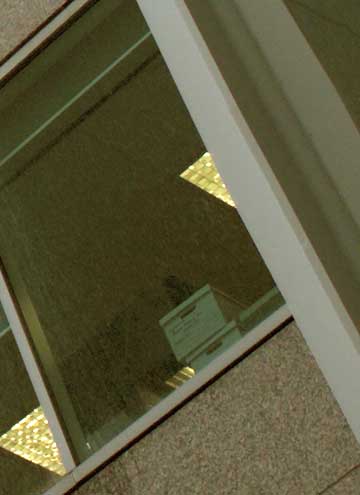
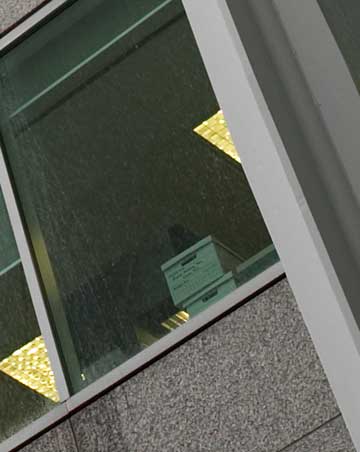
Please note that these enlargements are from the full frame above
and are equivalent to a print 42" X 63" inches in size
The above 100% enlargements allow us to examine resolution again. Neither frame has had any USM applied, either in the RAW processing software or Photoshop. I did try varying levels of sharpening with both frames on the premise that this might help to equalize the impression of sharpness, but this didn’t change my conclusion in any way.
____________________________________________________
A Fair Comparison?
One comment that is bound to be made is that the Kodak 14n is a $5,000 camera while the Canon 1Ds is a $8,000 camera. Is it fair to compare them? I believe that it is, for the following reasons. Firstly, they are each purported to be the leading edge in each lens mount family. The 1Ds is Canon’s top-of-the-line camera, while the 14n is Kodak’s (and thus currently the Nikon lens mount family’s) flagship. Until Nikon brings out a 10MP+ full-frame camera (and the best indications now are that they will not be doing so any time soon) these two cameras are what photographers have to choose from in each lens mount family if a 10MP+ and full frame body is desired. Lesser models from these and other manufacturers may of course be preferable for some photographer’s needs.
Let’s also keep in mind that in film cameras $1,500 gets you a top-of-the-line model like theNikon F5orCanon 1V. It also gets you one of the current 6MP DSLRs from Fuji, Nikon or Canon. Once one gets to either $5,000 or $8,000 one should expect, and deserves, something approaching the best that any company can produce. These prices are out of reach for most amateurs, but not for professional photographers. Most working pros will spend that much for film and processing in a month or two, or on one or two specialty lenses. So while the price difference is real enough it won’t make-or-break the purchase decision for most pros — who are the primary market for these two products.
____________________________________________________
About Firmware
It has been brought to my attention that the firmware in the camera that I am testing is not the latest. This is surprising since the camera was shipped from Kodak Canada’s head office to one of its largest dealers on the same day that I started testing it.
I have been told though that Kodak will be releasing a new revision this coming week. I also have been told by Kodak that I can expect to receive my own production camera for testing in about a week. We’ll see what revisions it contains, and also I will keep an eye on the flow of updates that we can expect to see in the weeks and months ahead.
____________________________________________________
Portrait Skin Tones
I will do some studio portraits in a week or so when Kodak provides me with the promised camera for longer term testing. But for now, here is an informal available light portrait taken at ISO 400.
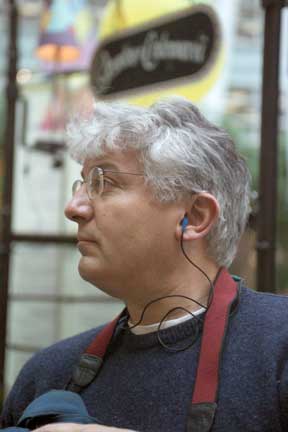
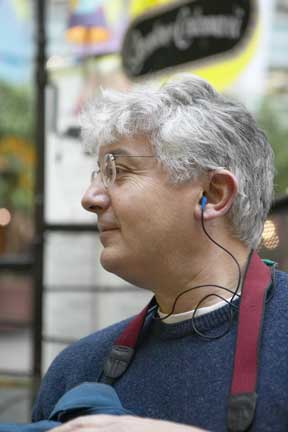
Sharpened
Sharpened
In this test I was simply look to be able to produce a decent available light portrait and used whatever tools I could to adjust colour balance, brightness, saturation and sharpness for as high quality an A3 print as I could.
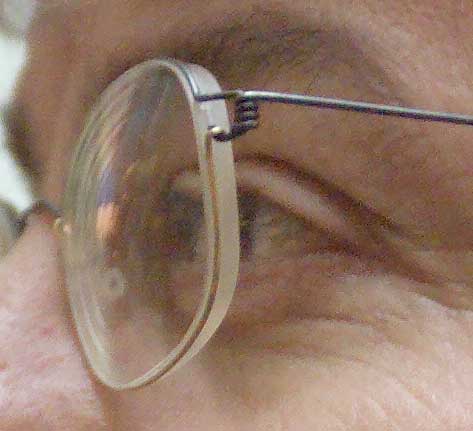
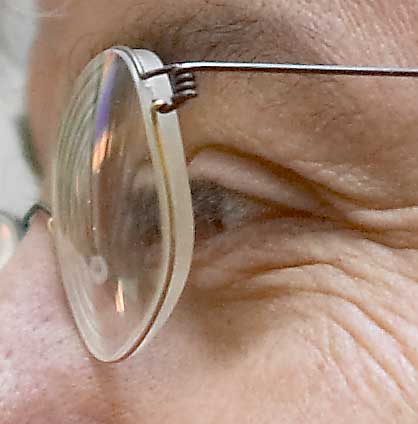
Detail. Sharpened
Detail. Sharpened
Once again two issues can be clearly seen. The 14n appears to show lower resolution and higher noise, specifically here at ISO 400. Of greater concern is something that I’ve seen in several of the online samples previously published by Kodak. That is a stippled texture that can be clearly seen in the corner of the eye.
As I was carefully experimenting with various USM settings on both images I saw that if I applied enough USM to the 14n image to create what I regard as an optimum image, this stippling became really objectionable. It’s some form of noise that I’ve never seen before in any image from either scanned film or a DSLR. But I have seen it in Kodak’s online samples, and in other frames that I’ve shot so far with the 14n, so this clearly isn’t a single sample anomaly.
____________________________________________________
Screen Judgments
One of the problems that anyone who publishes a web site faces is judgments on the size and compression level of the JPG images placed online. We all face constraints of bandwidth and storage space. For this reason it can be frustrating to some viewers that they don’t have the ability to see what I see on screen and a chance to look at prints and draw their own conclusions.
For this reason I am making prints of some of these test images available atVistekfor anyone who is in or near Toronto to see for themselves. They will be found there beginning on Monday morning, (March 24), at the desk ofBrian Georgein the second floor digital department. Additional prints will be available for examination there later in the week as well.
____________________________________________________
Day One Wrap-Up
I won’t be doing any further comparisons with the Canon 1Ds. The difference in image quality between these two cameras is so great that I feel guilty for pursuing it further. In my next update on Monday I will explore the Kodak 14n from a feature, function, software and build quality perspective and will provide my preliminary conclusions.
____________________________________________________
____________________________________________________
